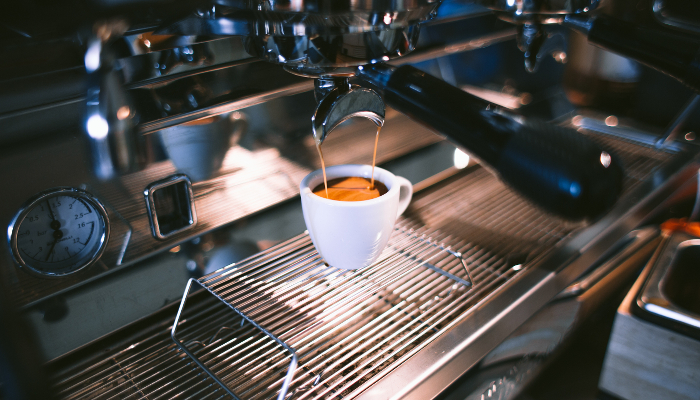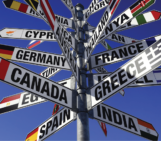
This week, Jac van Driel, PhD student at UCL shares with us his deepest thoughts on how to write the manuscript of his PhD thesis. Hoping you will enjoy: “An Ode to the Coffee House”.
Like many cordial expressions of civilised society, Covid-19 has plunged café culture to into stasis with the permanence of its condition not yet known. Pre-crisis, my hedonistic consumption of coffee used to take many forms but typically followed a fairly standard trajectory. A strong black coffee would gradually rouse me from a thesis induced coma, which would soon make way for large communal vat like cafetières, before a final post-lunch espresso would propel me through what remained of the day. While the consumption of incrementally larger amounts of coffee has no doubt inflicted cost to both my kidneys and wallet, I seldom reflected on the rituals or history of this beverage, a beverage which has begat much of what is associated with academic life today.
Since its mythologised discovery by the goat herders of the Ethiopian highlands, the consumption of coffee has inextricably altered every society through which it pours. Noted for the energetic behaviour instilled into their livestock, farmers initially began consuming coffee in its whole cherry form. Its early up-takers were religious devotees using its stimulating properties to drive them through the long nights of prayer. Its appeal grew wider as modes of preservation developed, notably the isolation and roasting of the cherry seed. Trade routes soon began to flourish around the Horn of Africa and the Red Sea as early as the 12th century and coffee continued to spread further afield through much of the Middle East, eventually arriving in Constantinople in the 16th century. Through its increasing consumption throughout the Ottoman empire, the coffee’s position in society was elevated through the first coffee houses and beginnings of a communalised drinking culture.
With a growing ubiquity and association with the Ottomans, it was not long before coffee started to be seen and consumed in much of western Europe. Greek Christians and those connected with the Levant company soon began establishing coffee houses in the larger commercial and political centres of the continent. One such merchant was Pasqua Roseé who established England’s first coffee house in 1651, first in Oxford, then London before later moving to in Paris in 1672.
In Britain, coffee houses began flourishing particularly due to Cromwell’s authoritarian prudence, who’s religious fervour outlawed another of society’s unbending institutions, the tavern. From 1652 to 1662, the number of coffee houses increased from 10 to 83. However, Britain’s brush with zealotry puritanism was short lived. London soon fell off the wagon following the reinstatement of Charles II and coffee houses were here to stay.
A coffee house would typically reflect both the clientele and the commercial nature of the borough in which it was located, ranging from the print to insurance and banking industry. Coffee houses cultivated a civil and discursive environment which featured the latest newspapers, pamphlets and gossip of the day. Each establishment was typically dominated by a large single table, in which arriving customers would sit wherever possible. Coffee houses notably in Oxford and London grew in increasing popularity with students and became known as `penny universities’ due to the cost of entry. These new intuitions offered a space for students and eccentrics to discuss dissenting ideas and the `new science’ outside of the universities, which were still dominated by classics, law and theology. The polymath Robert Hooke (1635-1703) revelled in the polite theatricality and varied discourse of the coffee houses, a place which he could both showcase his new scientific instruments, but also patronage local artists and poets. Hooke often expressed the importance of coffee houses in the development and understanding of latest theories and discoveries of the era, an opinion which was shared by a number of his contemporaries from John Dryden (1631-1700) to Samuel Pepys (1633-1703).
Despite its illustrious history, coffee houses and the surrounding culture finally began to decline in the late 18th century. This is primarily attributed to the increased consumption of tea, but also to the shifting utility of the coffee house. Many establishments began to morph into private members’ clubs and even further into larger enterprises, establishing modern institutions such as the London Stock Exchange.
With the health crisis at hand and an economic crisis lurching into view, it may seem trite to explore, let alone eulogize the significance of this caffeinated beverage, but in this prolonged period of isolation, it seems apt to explore the roots of this most communal of drinks. Its history highlights the role civil, yet cantankerous environments play in propelling scientific progress. Their previous decline underlines the danger of gated institutions and allows us to ponder to what we owe to collective creativity to the subtle porosity of a human exchange. Hopefully, when cafés are full once more and the turgid rigidity of conference calls are a horror of the past, we can once again elope to the scents and sounds of a world brimming with emotion and flat whites. And the shear joy of scientific discourse.
Further reading:
Brian Cowan, The Social Life of Coffee: The Emergence of the British Coffeehouse (Yale University Press, 2005)
Mark Prendergast Uncommon Grounds: The History of Coffee and How It Transformed our World (Basic Books, 2010)
Jonathan Morris, Coffee: A Global History (Reaktion, 2018)
Anthony Wild, Black Gold: The Dark History of Coffee (Harper Perennial, 2010)



